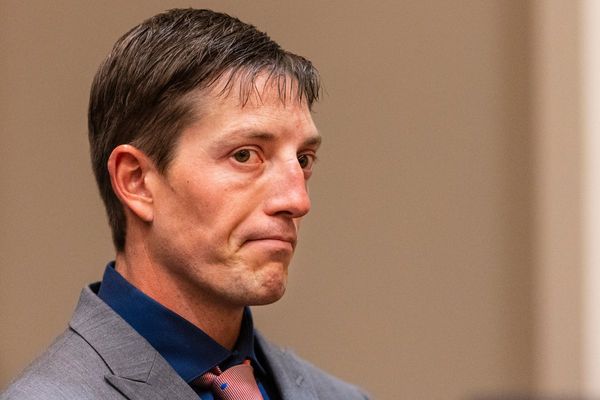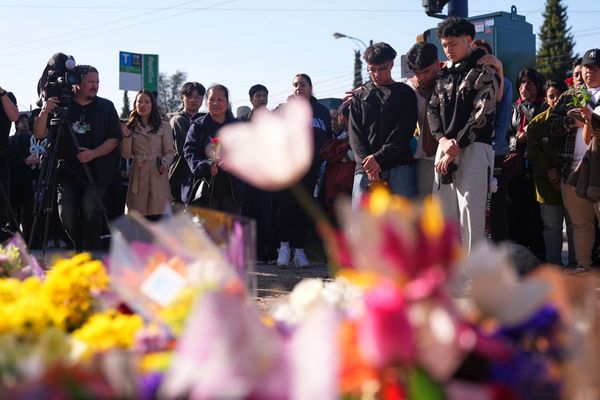Aboriginal teenager Kumanjayi Walker was unlikely to have been a threat to murder-accused Constable Zachary Rolfe when the policeman fatally shot him, a jury had been told.
Human movement expert Andrew McIntosh studied police body-worn camera footage of Rolfe, 30, firing three shots into the teen on November 9, 2019.
Dr McIntosh found Rolfe had moved away from Mr Walker, 19, before he pulled the trigger for the first time.
"On balance, by the time Rolfe first shot Walker he was unlikely to be a direct threat to Rolfe," he said in a report about the incident read to the Northern Territory Supreme Court on Friday.
"Immediately prior to the first gunshot Rolfe was separated from Walker."
However, he said Mr Walker may have been a threat to Rolfe and his partner Remote Sergeant Adam Eberl, then a constable, before he was shot.
This is when the pair were wrestling with the teen as they attempted to arrest him in his grandmother's home in Yuendumu, 290km northwest of Alice Springs.
Mr Walker had lied about his identity before stabbing Rolfe in his shoulder with a pair of scissors during the scuffle.
Sgt Eberl then struck Mr Walker and placed his right arm around the teen's head and neck while grappling his left arm.
About the same time Rolfe fired his first shot and Sgt Eberl and Mr Walker fell to the ground.
Rolfe remained standing as he fired his second and third shots into Mr Walker from behind Sgt Eberl, who was on top of the teen.
Dr McIntosh found "Mr Walker was unlikely to be a direct threat to Rolfe" at this time because the pair remained apart and the teen was being "controlled" by Sgt Eberl.
He said Mr Walker was also a "low threat" to Sgt Eberl because the teen's right hand, which was holding the scissors, was likely to have been at least partially immobilised.
"Mr Walker was on his right side with right arm pinned between his body and the mattress," the adjunct professor of biomechanics told the court.
"That means you are not really able to thrust with your hand. So if you are using the weapon in your hand and your arm is pinned it's very difficult to develop force."
Sgt Eberl sustained "minor injuries consistent with a physical struggle" including a scratch to his left shoulder, but Dr McIntosh was unable to find a movement sequence where Mr Walker struck him.
He said it was "plausible" a wrist watch or clothing may have caused the injury.
Rolfe has pleaded not guilty to murdering Mr Walker, saying he was defending himself and Sgt Eberl from a violent offender.
The Crown has conceded the first shot, which was fired while Mr Walker was standing and resisting arrest, was justified.
But it says the second and third shots, which are the subject of the murder charge, went "too far".
Dr McIntosh also found that the wound on Rolfe's shoulder, which did not require stitches, appeared to be made by blunt force impact.
He agreed is was likely made by a person making a downward strike with a pair of "blunt-nose scissors".
"The wound has the characteristic of the skin just being gouged out as opposed to sliced open," he said.
Dr McIntosh found one sequence of movement captured by Rolfe and Sgt Eberl's body-worn cameras that was likely to be the blow.
Sgt Eberl has previously told the court he did not draw his gun on Mr Walker "because his right arm was out and it was not in front of me trying to stab me".
The trial continues Monday.







